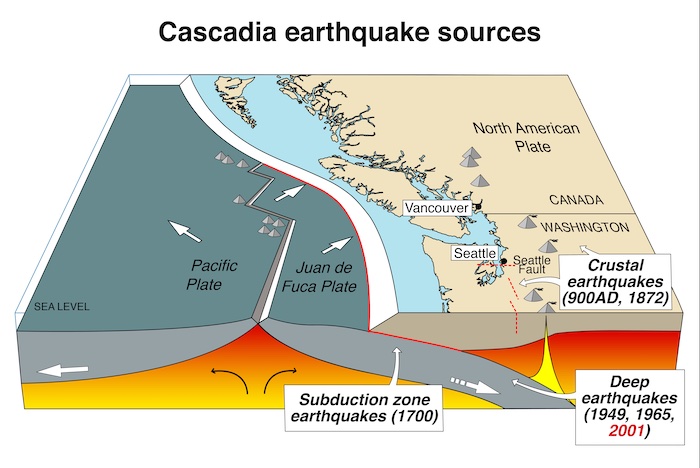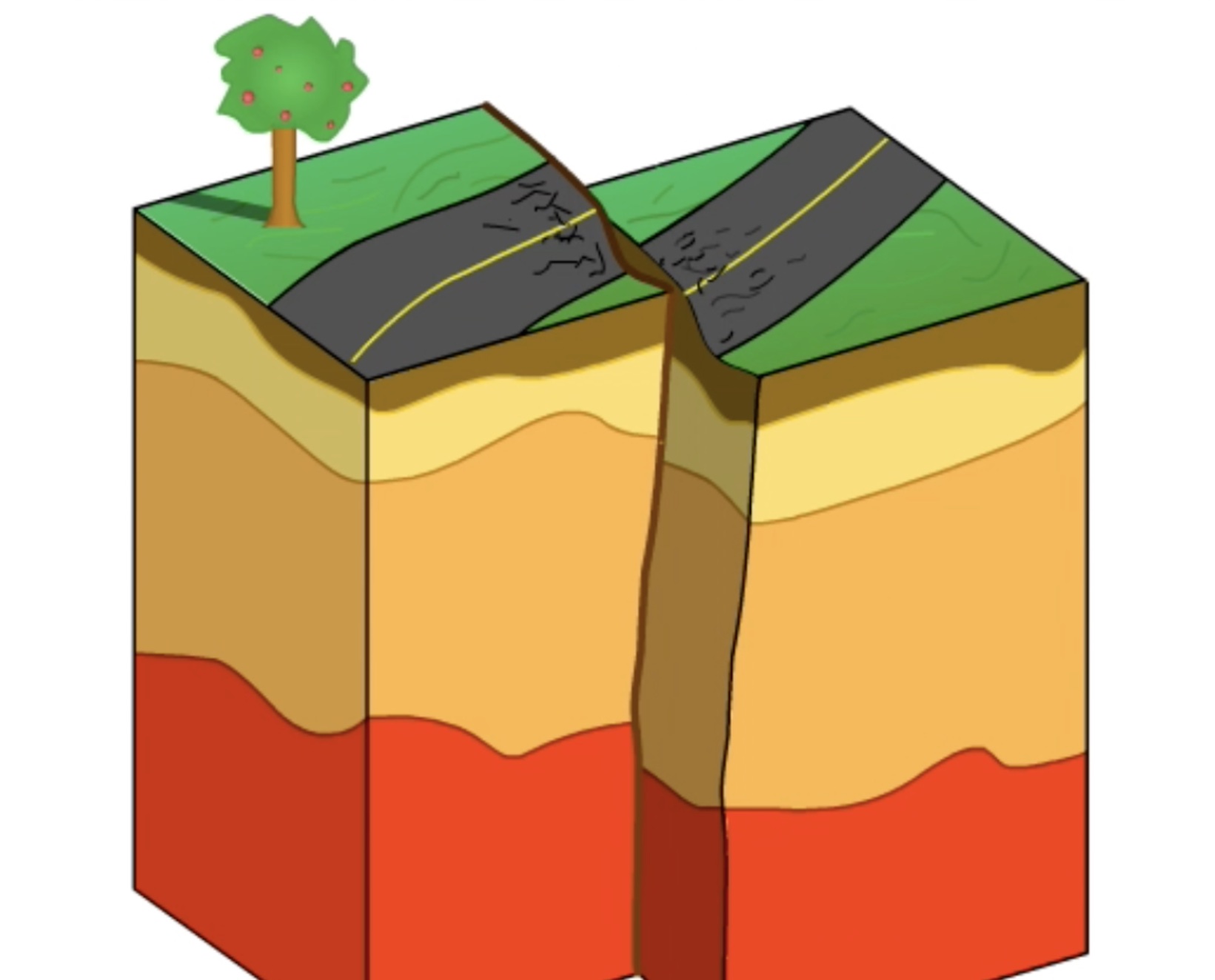
Earthquake preparedness in B.C.
August 25, 2023
By Stan Ridley
There are lessons to be learned from a recent disaster in Turkiye.
British Columbia’s Lower Mainland and Vancouver Island are high-risk earthquake areas. The M7 to M8 quakes that occur on the Pacific Coast roughly every 30 to 50 years are significant, with magnitudes similar to the M7.5 to M7.8 ‘strike-slip’ quakes in Turkiye earlier this year, which killed more than 50,000 people, left millions homeless and caused billions of dollars’ worth of infrastructure damage.
Canada’s West Coast experienced an M9 subduction quake and tsunami in 1700, which were dutifully recorded as far away as Japan and left evidence of major geologic change that remains clearly visible today. Since that event, Vancouver’s local subduction tectonic plate interface has been storing immense amounts of strain energy, as the oceanic Juan de Fuca and North American Plates have been ‘squashing’ against each other at the rate of about 4 cm per year.
The estimated recurrence interval for an M9 subduction quake is between 200 and 800 years. The sobering reality for British Columbia is the need to prepare for the inevitable next quake. An M7 or M9 could occur tomorrow. Either would be caused by the release of geological strain energy.
An M7 or M9 could occur strike B.C. tomorrow.
Distances and energy
While M7 quakes often involve unpredictable hypocentral distances, the next M9 will most certainly occur at depth, with more predictable distances to important structures and facilities. Relatively short distances (i.e. less than 50 km) result in very high peak ground accelerations, velocities and displacements.
Strong ground shaking from M7+ quakes tend to last 0.5 to two minutes, as was the case for Vancouver Island’s M7.3 quake in 1946. M9+ quakes tend to be associated with longer strong ground shaking, in the range of two to four minutes, with total shaking around 10 minutes, as was the case with Chile’s M9.2 quake in 1960.
The seismic total amplitude and energy releases from a M9 quake are 100 and 1,000 times greater, respectively, than those from a M7 quake. What can be done to prevent severe damage?

The oceanic Juan de Fuca and North American Plates have been ‘squashing’ against each other at the rate of about 4 cm per year. Image courtesy PNSN.
Mitigating damage
In Turkiye, it seems (a) a lack of building code enforcement and (b) the effects of earlier and less stringent codes of practice on thousands of existing structures—in particular, structurally ‘soft’ ground floors to accommodate commercial businesses that collapsed, followed by the collapse of higher floors, like a stack of pancakes—were mainly to blame for the high mortality and infrastructure damage.
Codes of practice and building codes are more stringently enforced in high-risk seismic areas in Canada, the U.S. and Chile. Over the last three decades, British Columbia’s provincial, municipal and other agencies have carried out risk assessments for existing infrastructure, including such critical post-disaster assets as hospitals, schools, bridges and dams. These investigations have identified significant weaknesses and led to the strengthening and/or replacement of a number of facilities.
The very long and strong shaking of M7.9 to M9.2 quakes tends to ‘shake down’ structures (e.g. shaking the concrete out of structural columns rebar cages) and typically could cause widespread ground ‘liquefaction’ in susceptible areas like the Fraser River Delta and Vancouver’s False Creek Flats.
Investigations have identified significant weaknesses in facilities.
With advice from professional engineers, seismologists, geologists and other experts, Canadian building codes have been revised, substantially increasing the required level of force, duration and shaking that a normal structure could be expected to sustain with some damage but without collapsing.
The designs of vital post-disaster structures, however, such as hospitals, are required to resist 50% higher forces, so as to ensure they remain operational, to a large extent, after an earthquake. That said, it is not clear how many older or newer hospitals would be reasonably safe and operational after a disaster.
Main hospital building structures and their critical equipment, if suitably founded deep on rock or other suitable strata, may remain reasonably safe and operational after a major quake, but it is not so clear whether their access roads and critical service connections, in or over liquefiable soil areas, would remain usable.
While significant money and resources have been spent on earthquake preparedness in British Columbia, a great deal more needs to be done in the Lower Mainland and on Vancouver Island.
Remaining vulnerabilities
While wood-framed and new-build concrete and steel structures would likely ‘ride through’ major shaking satisfactorily, with some damage, of particular concern is the region’s significant stock of old brick, concrete and steel structures that were (a) designed to much lower seismic standards or (b) were constructed on poor or liquefiable foundations, particularly in low-lying flood plain areas.
Further, Vancouver Island’s west coast is at high risk from major tsunami waves caused by large subduction-type quakes, while its east coast and low-lying areas of the Lower Mainland are at risk from waves generated by M7 or greater quakes in the Strait of Georgia, underwater landslide subsidence waves or seiches (i.e. standing waves confined in the strait).
So today the questions remain: (a) which of the region’s critical infrastructure and buildings are truly post-disaster capable and (b) how will the public access these vital, operational facilities after a major earthquake?
Stan Ridley, C.Eng., MICE, is president of West 2012 Energy Management, based in Vancouver.
This article originally appeared in the July/August 2023 issue of Canadian Consulting Engineer.

